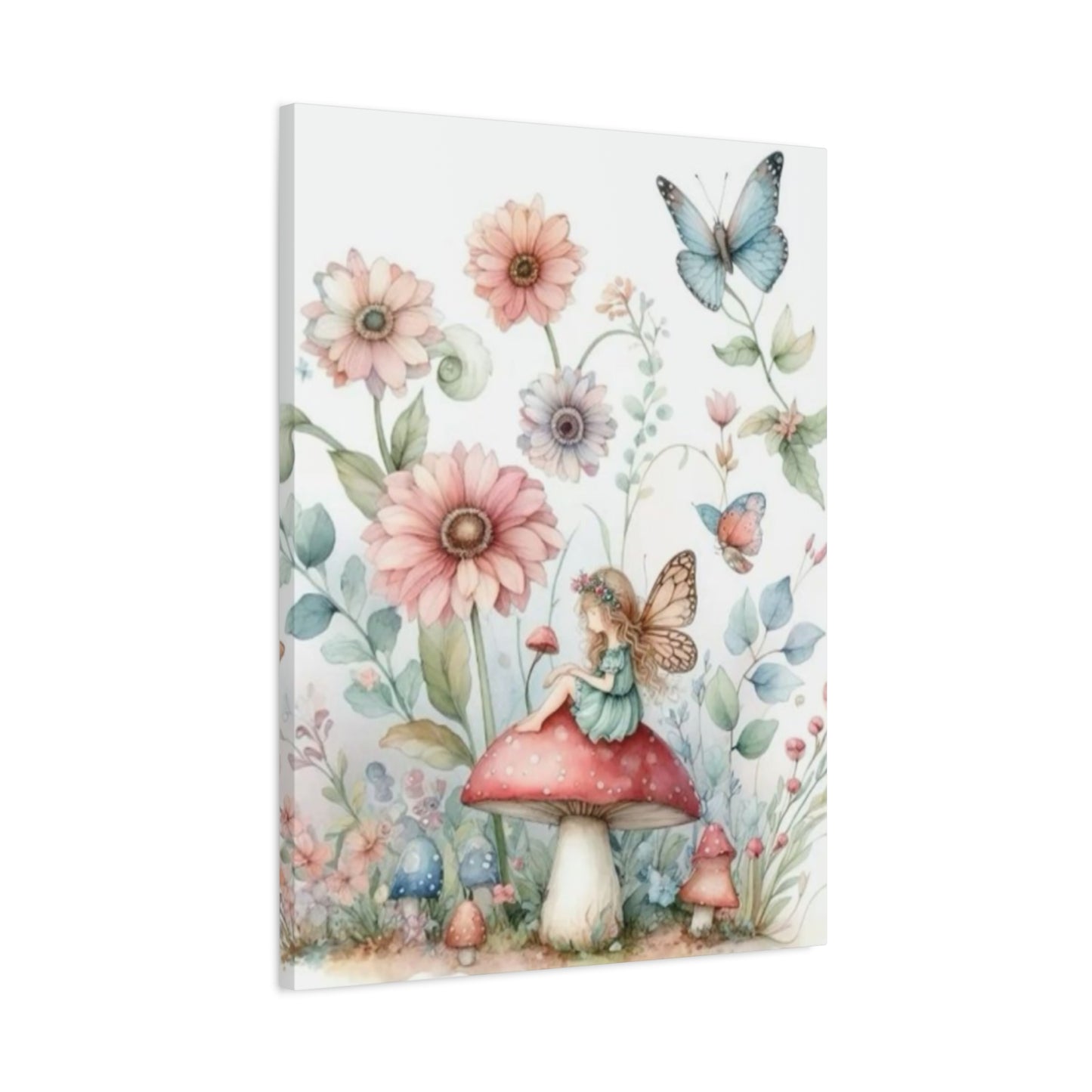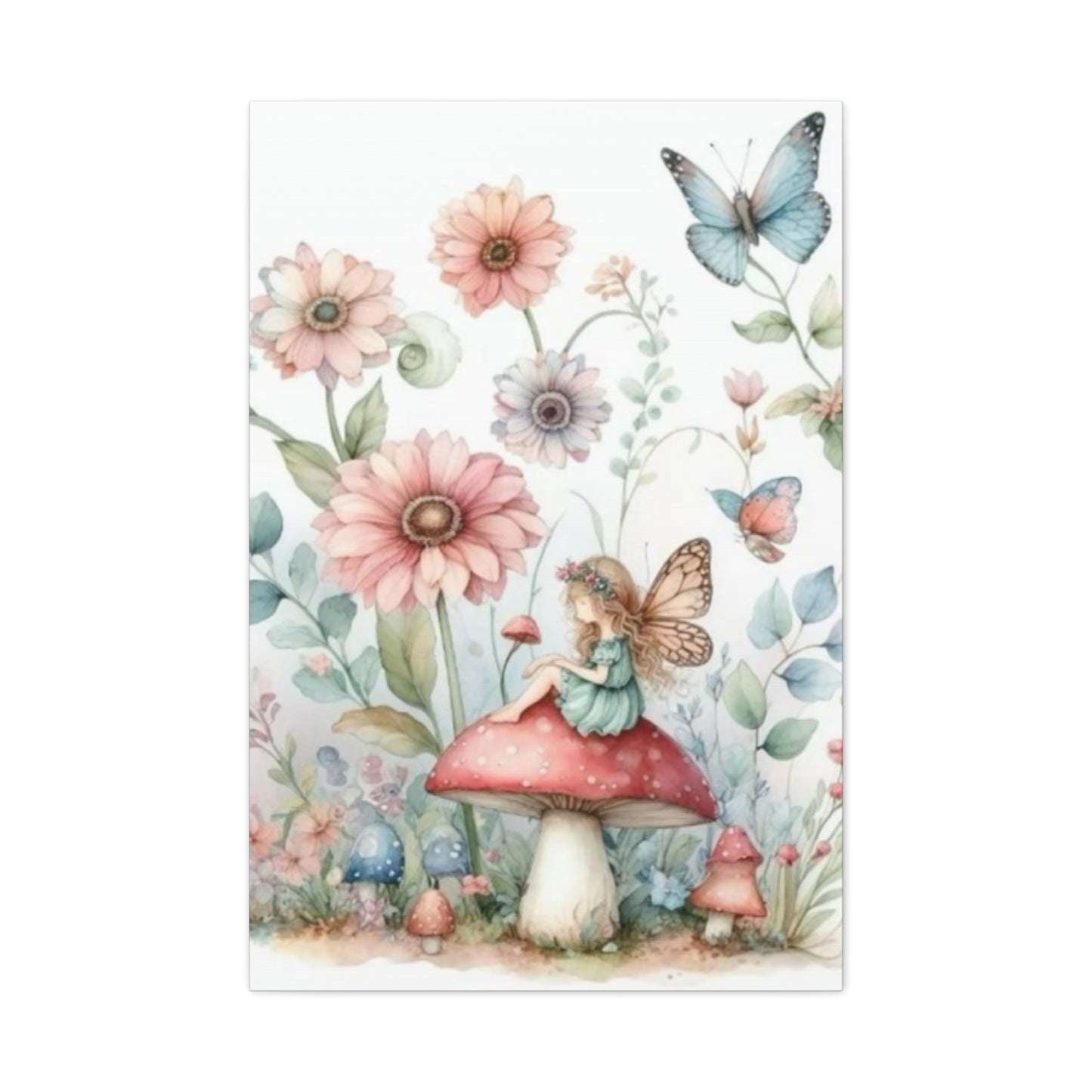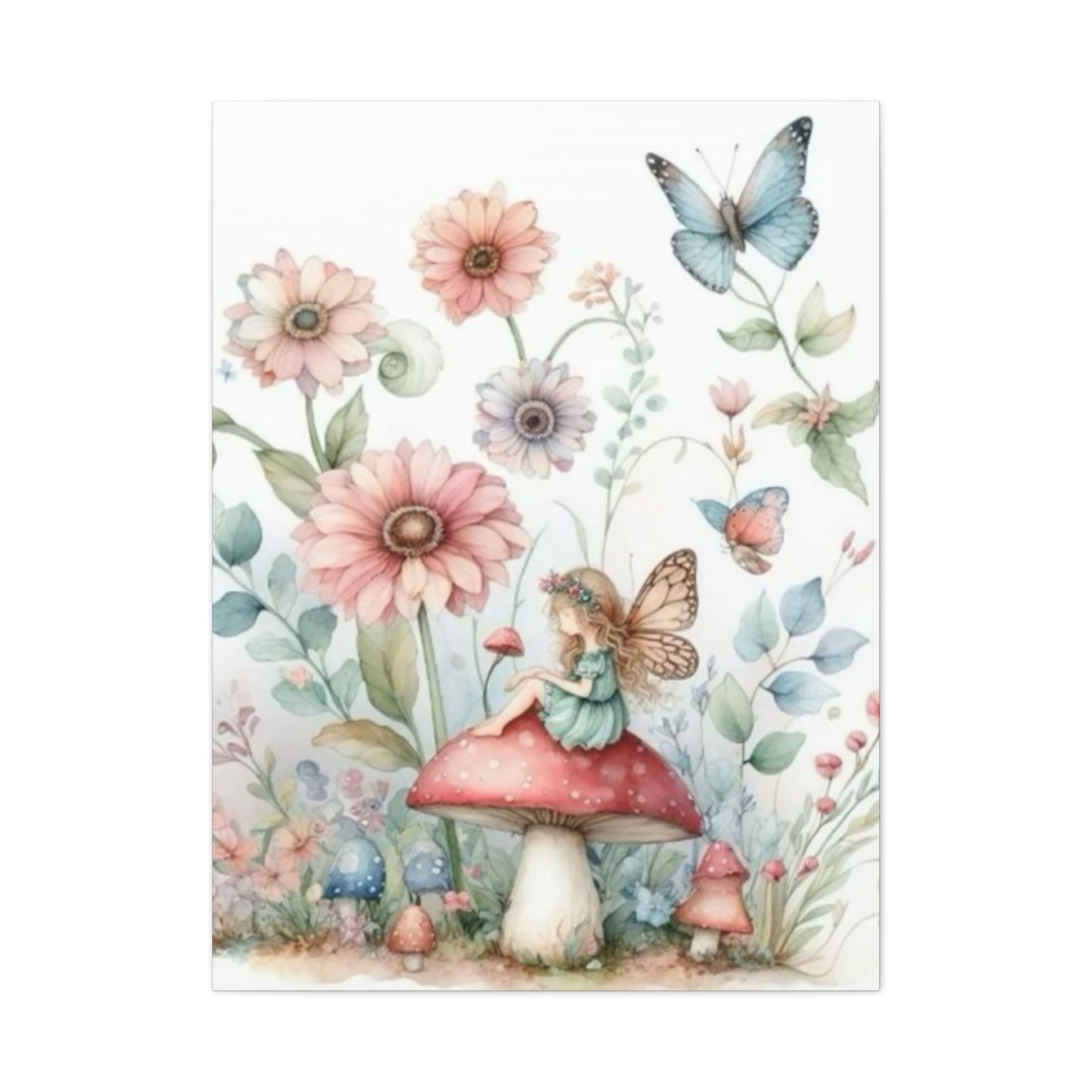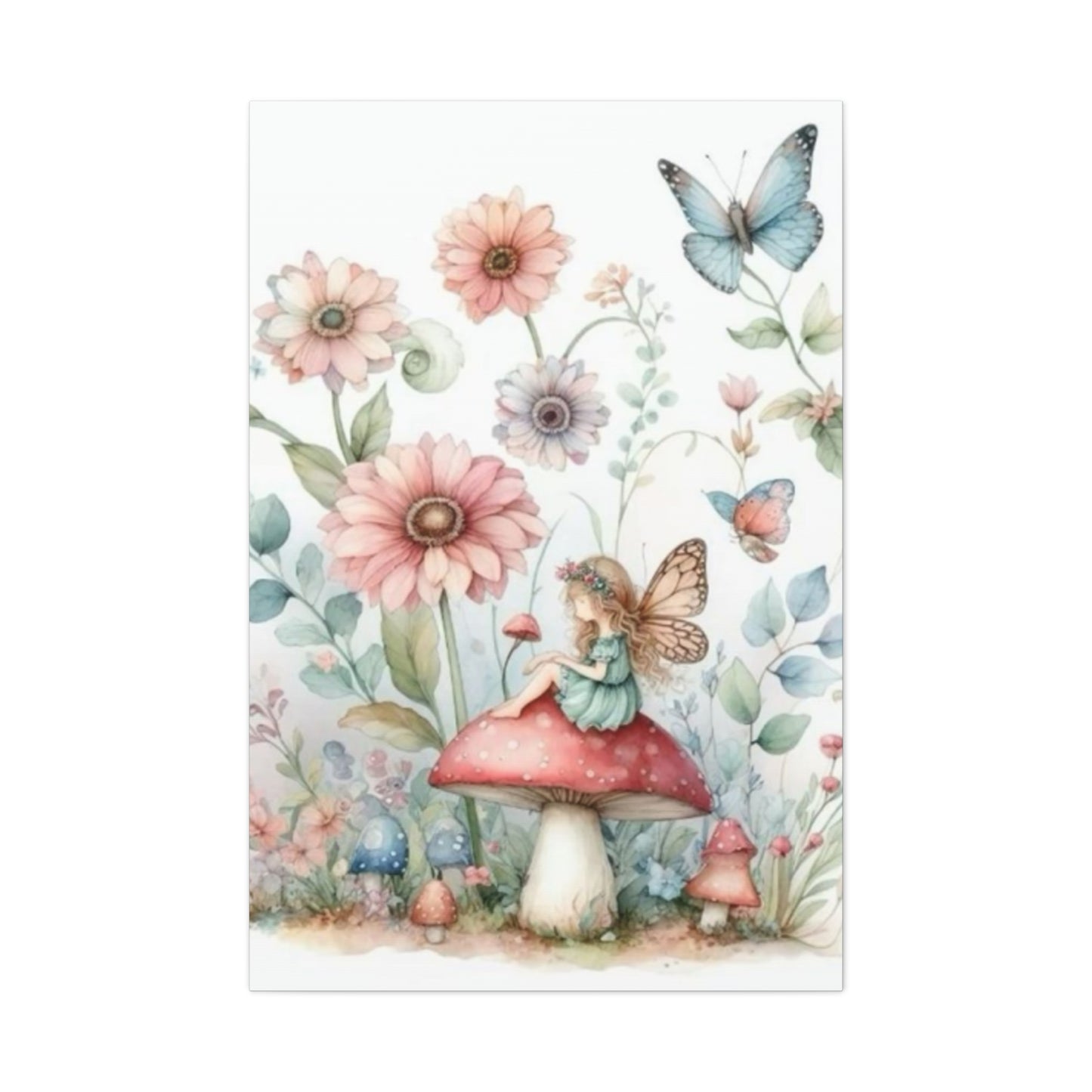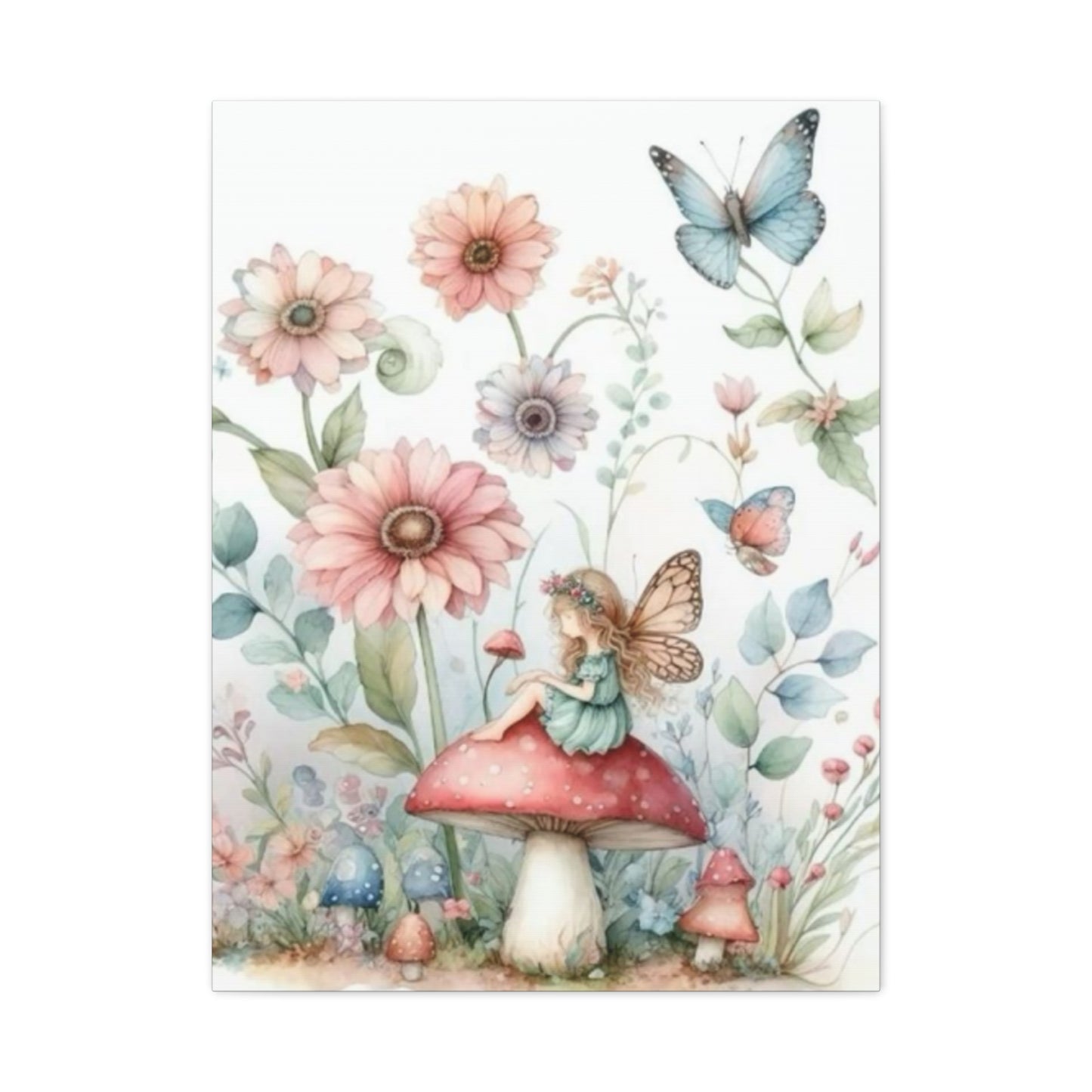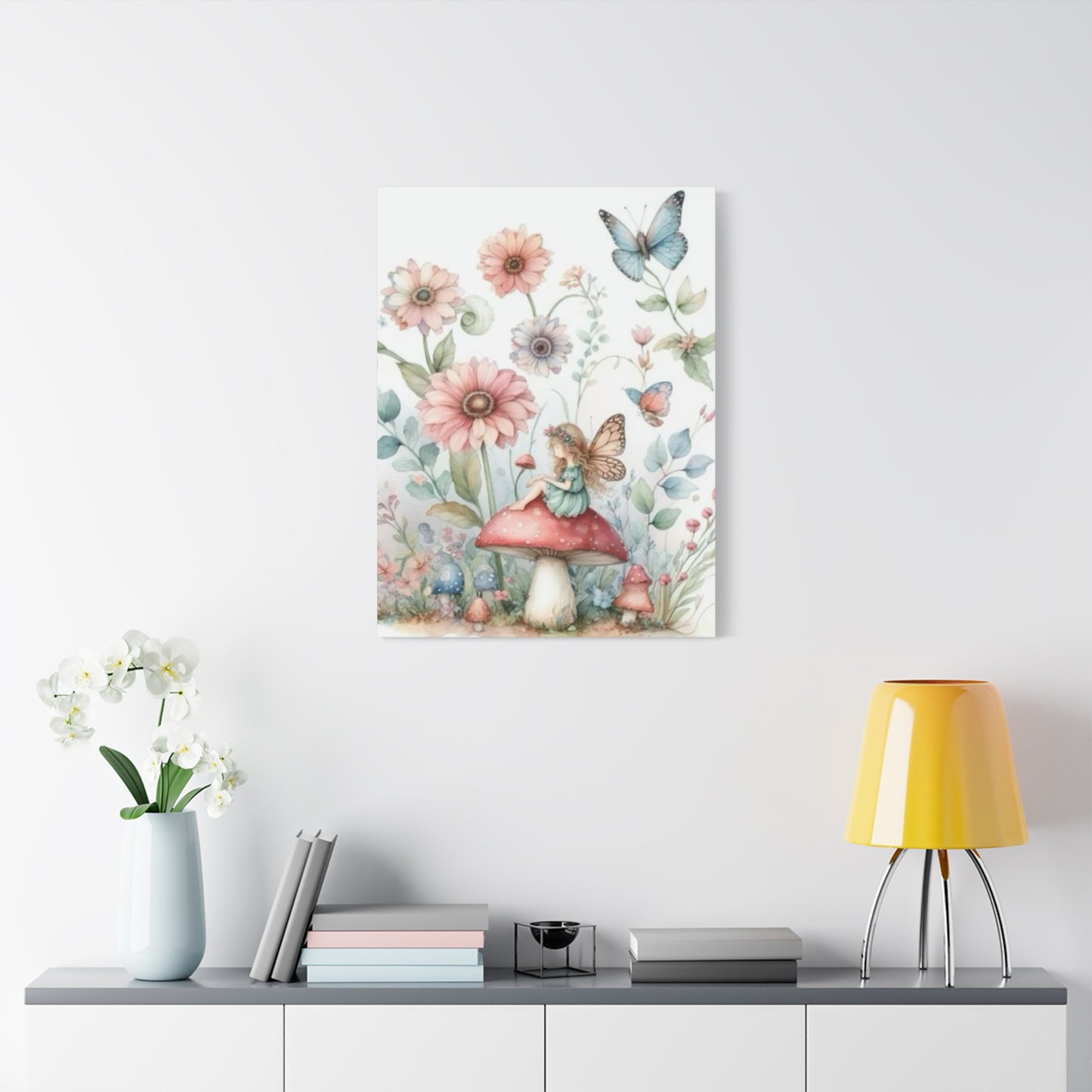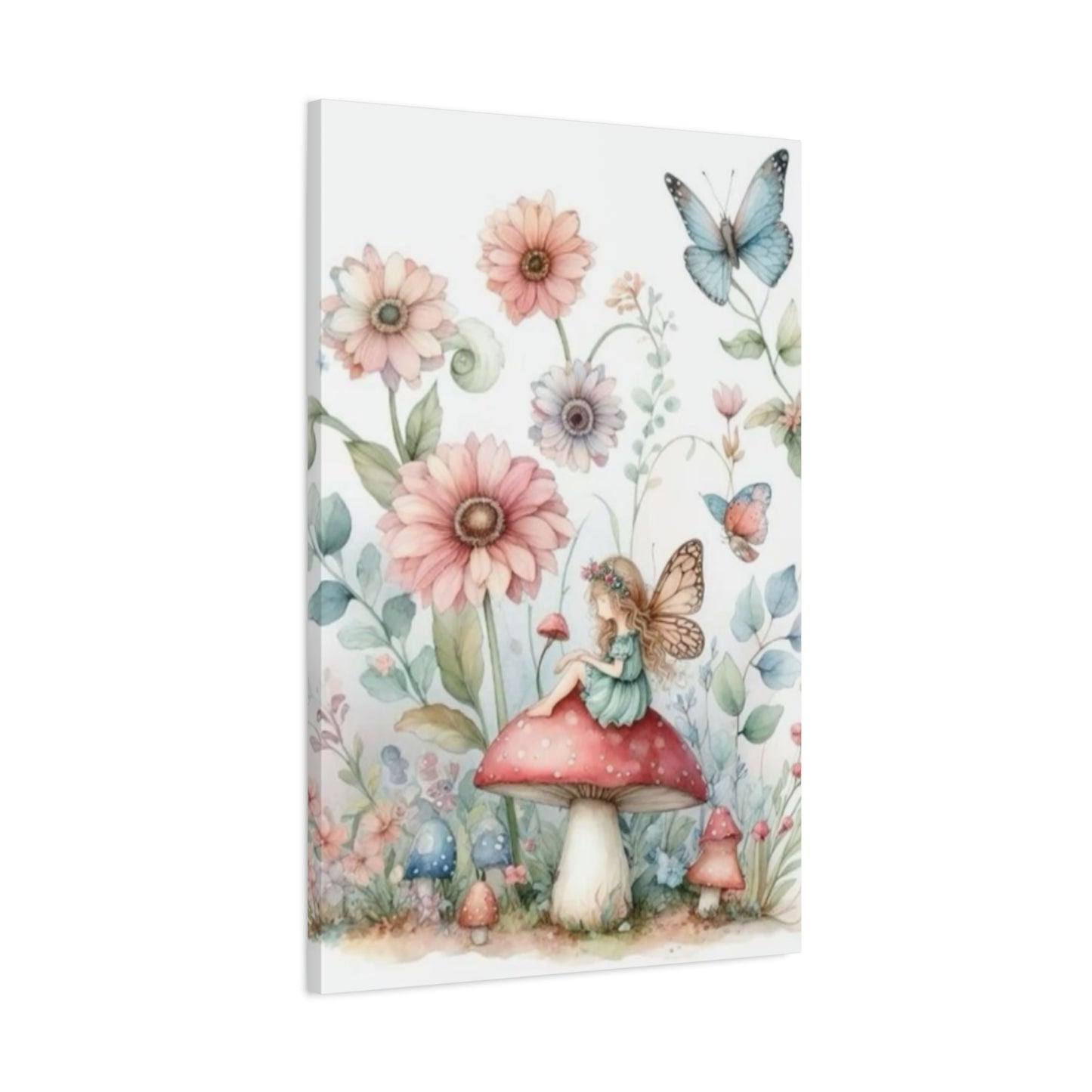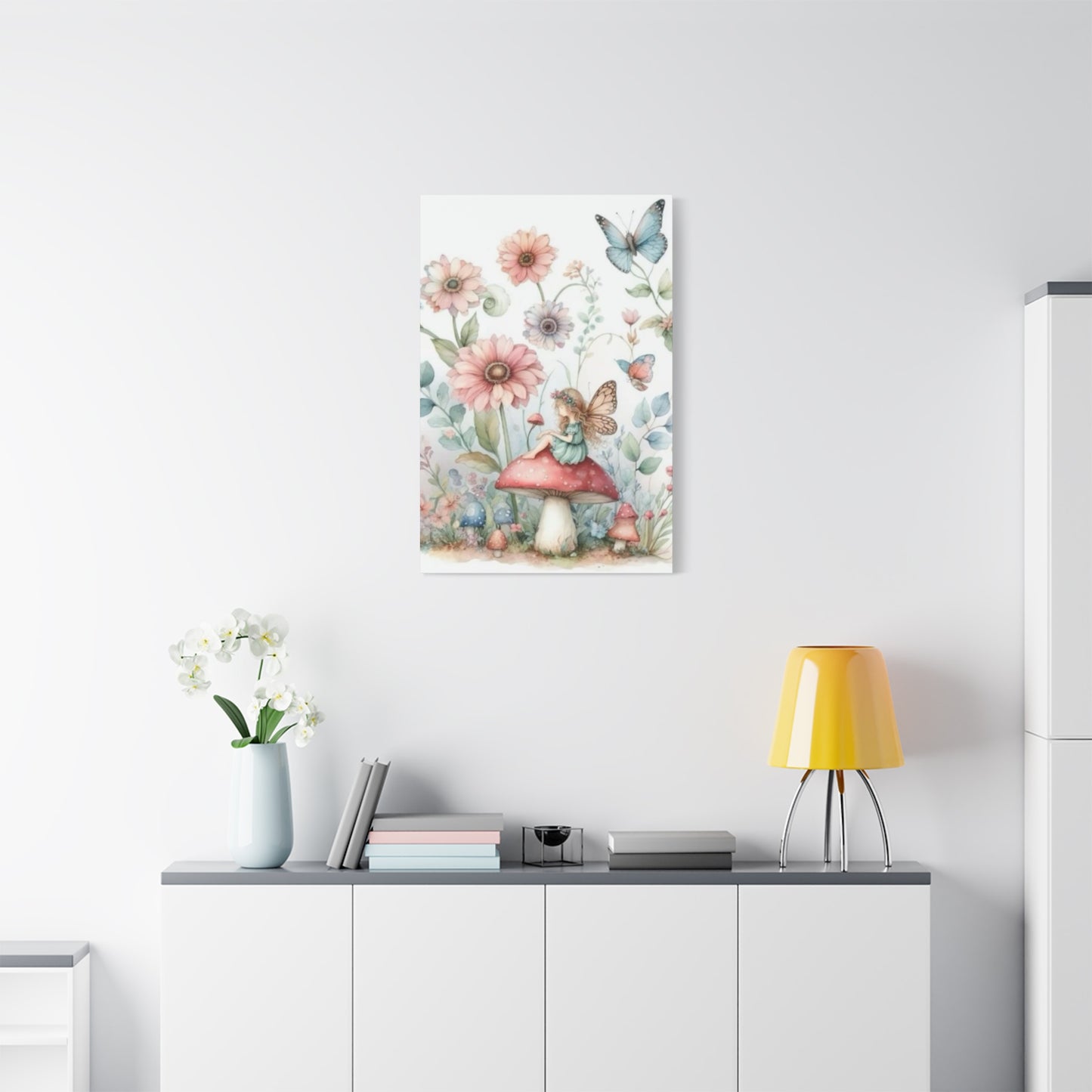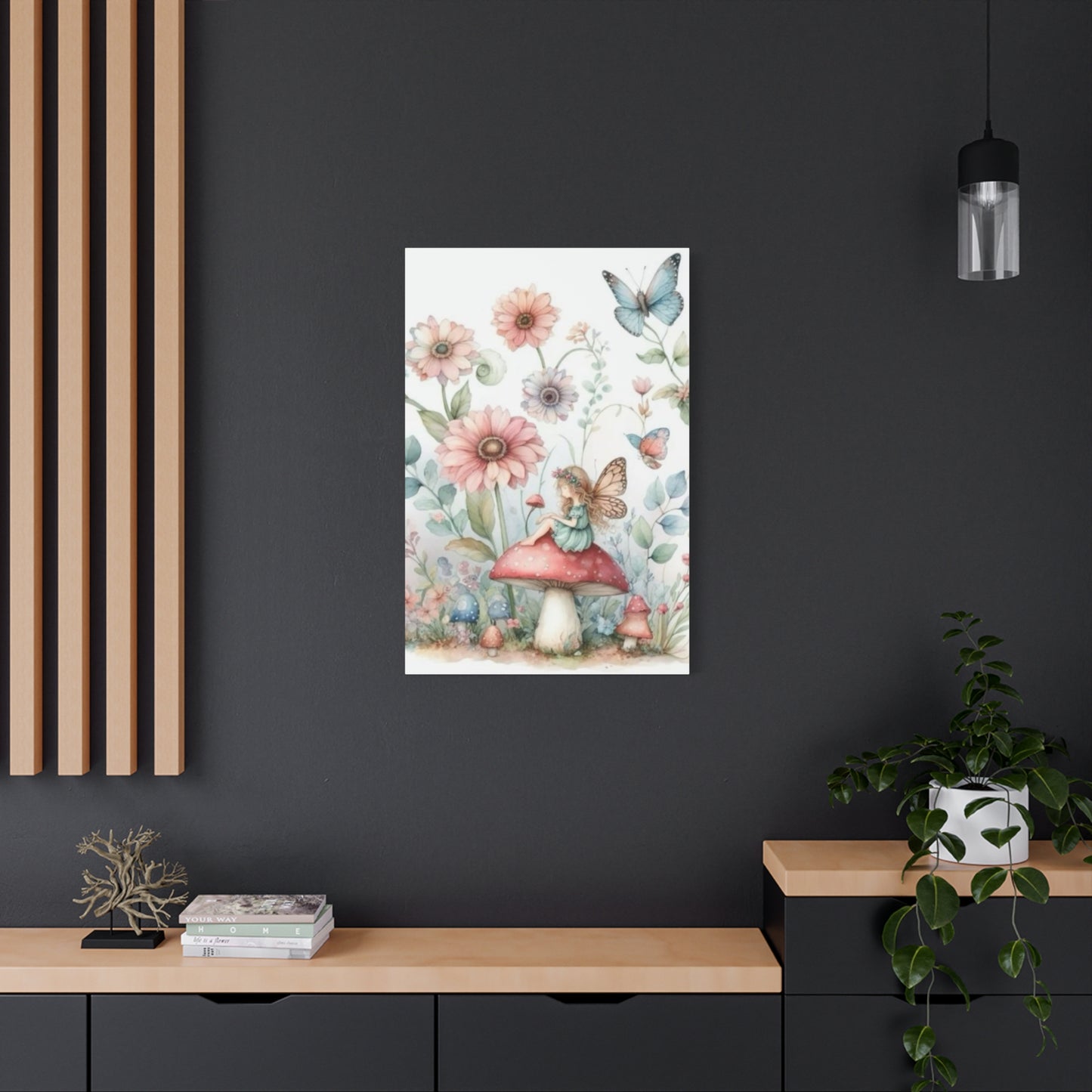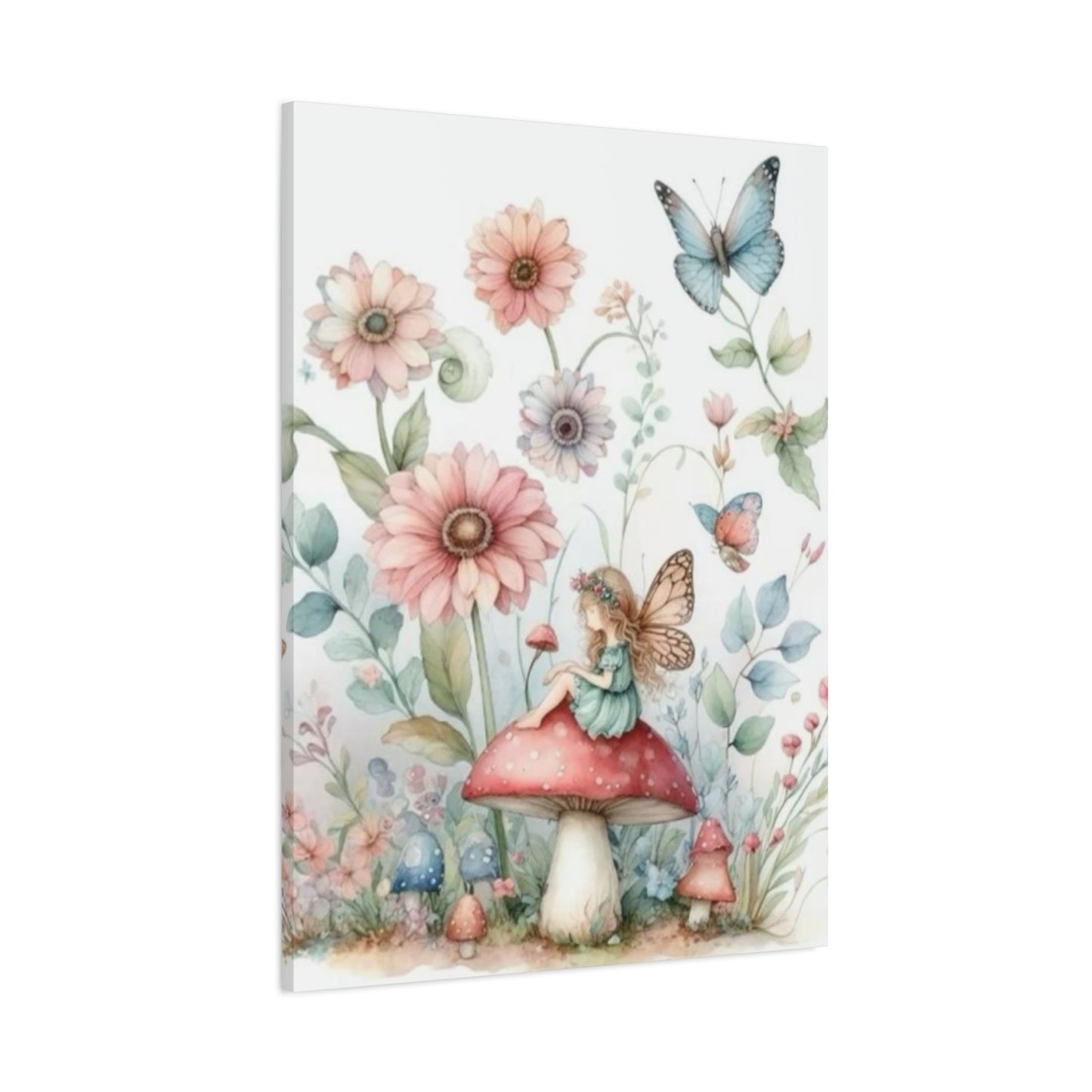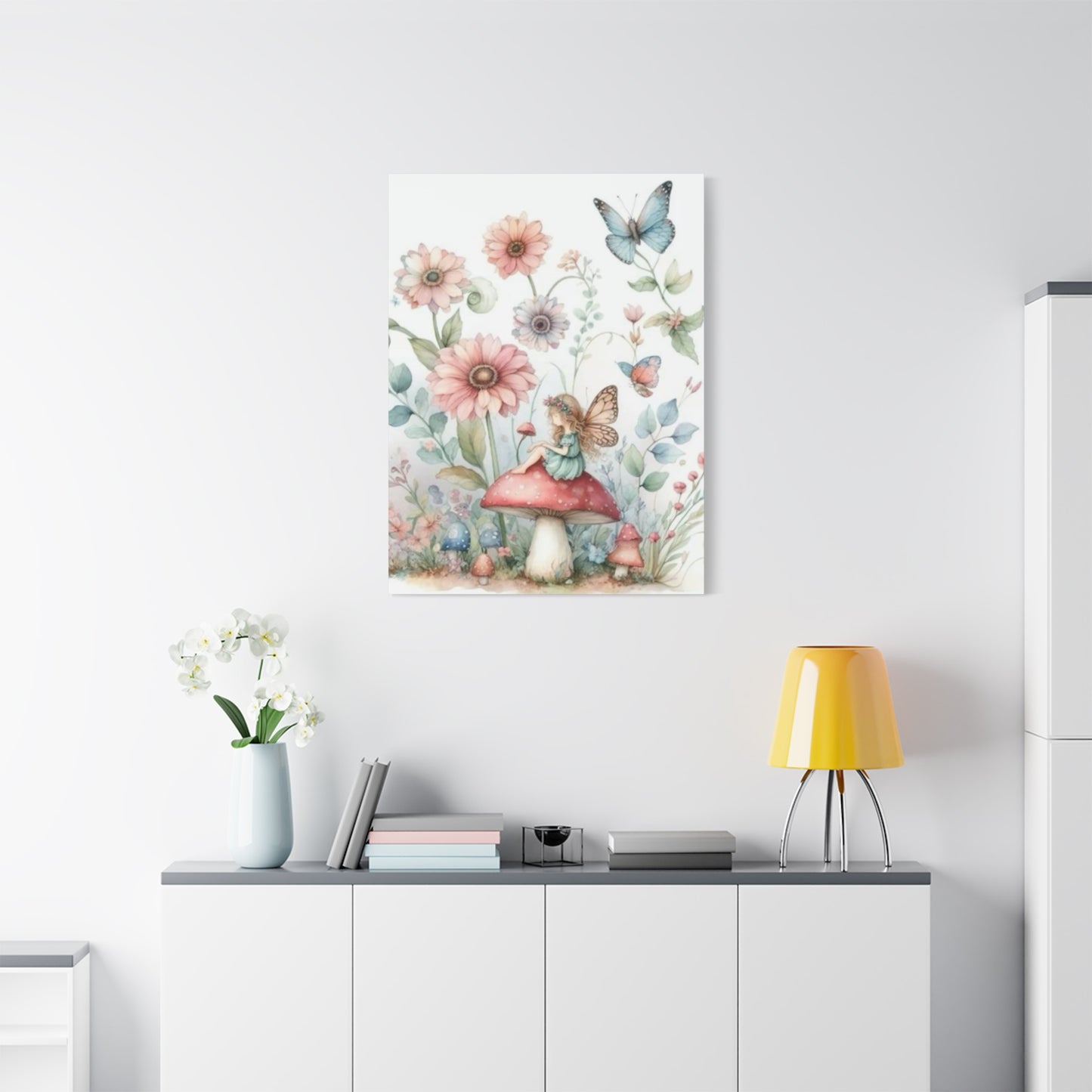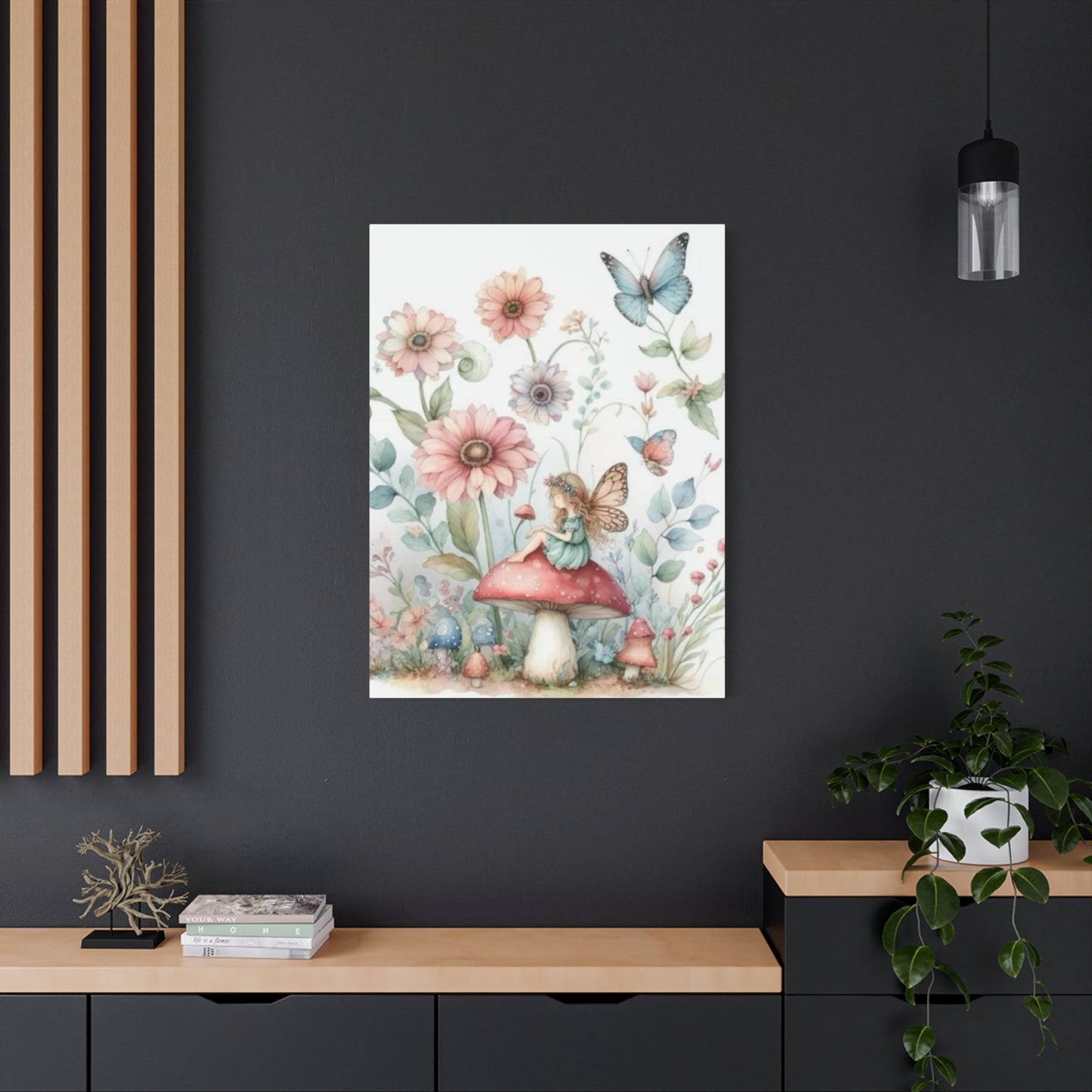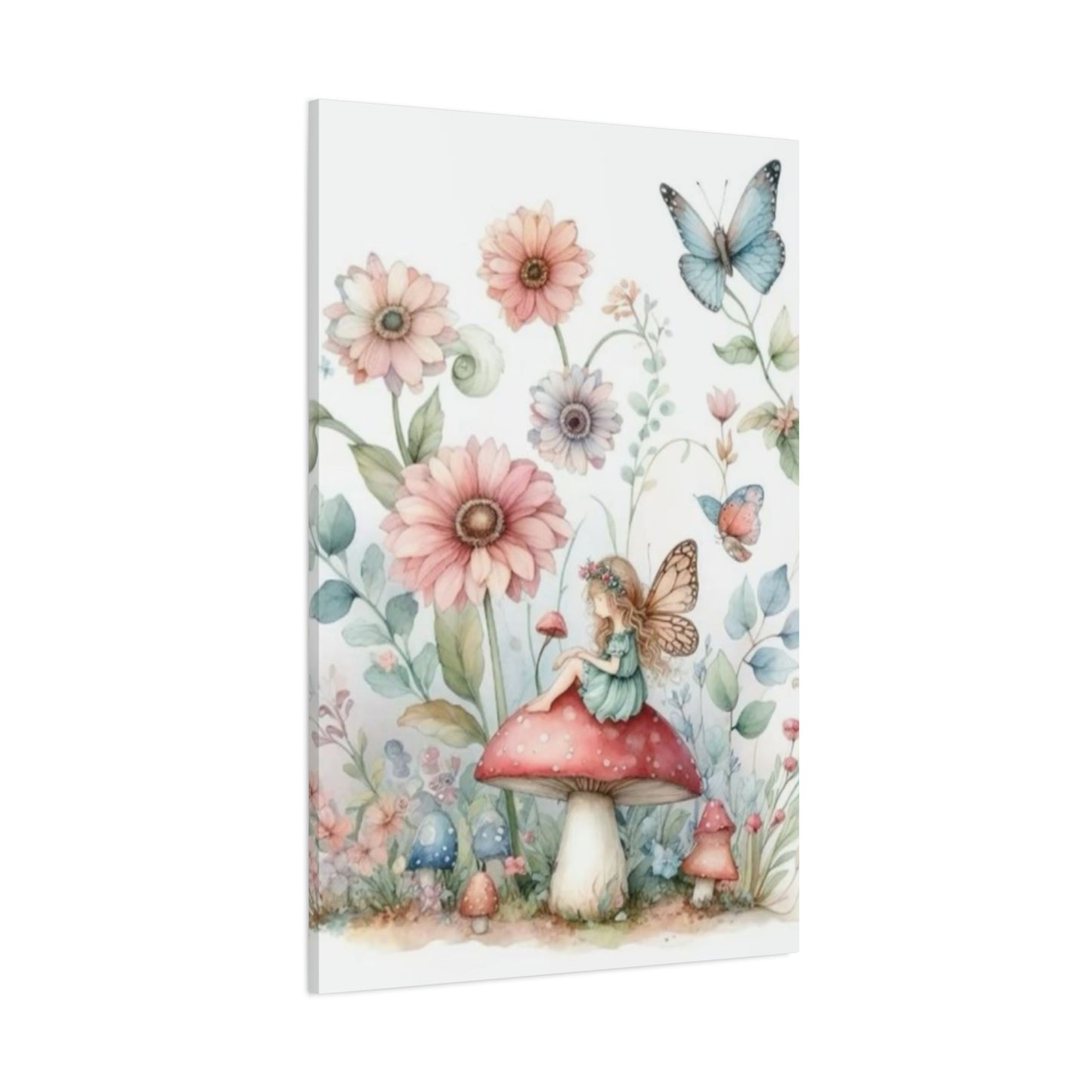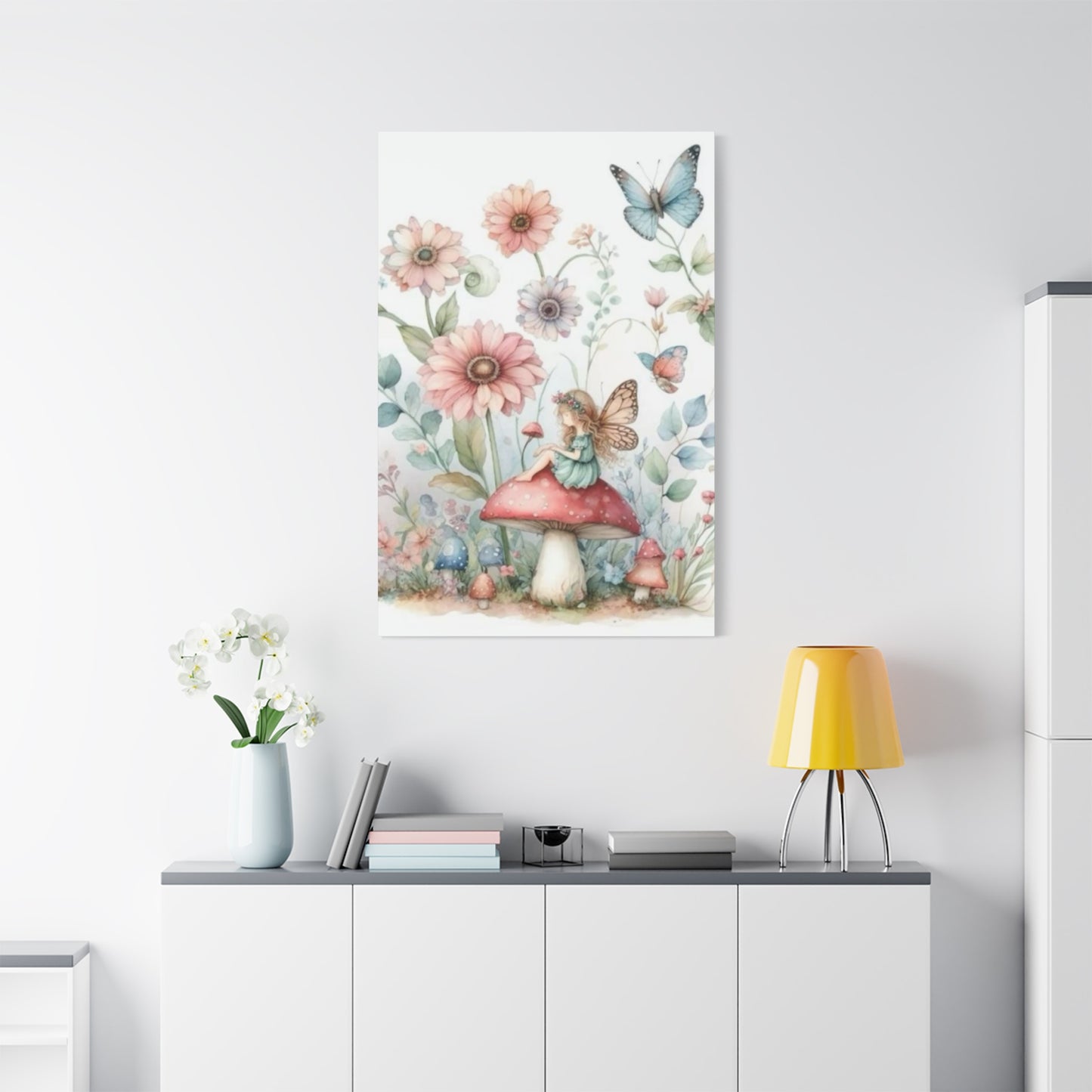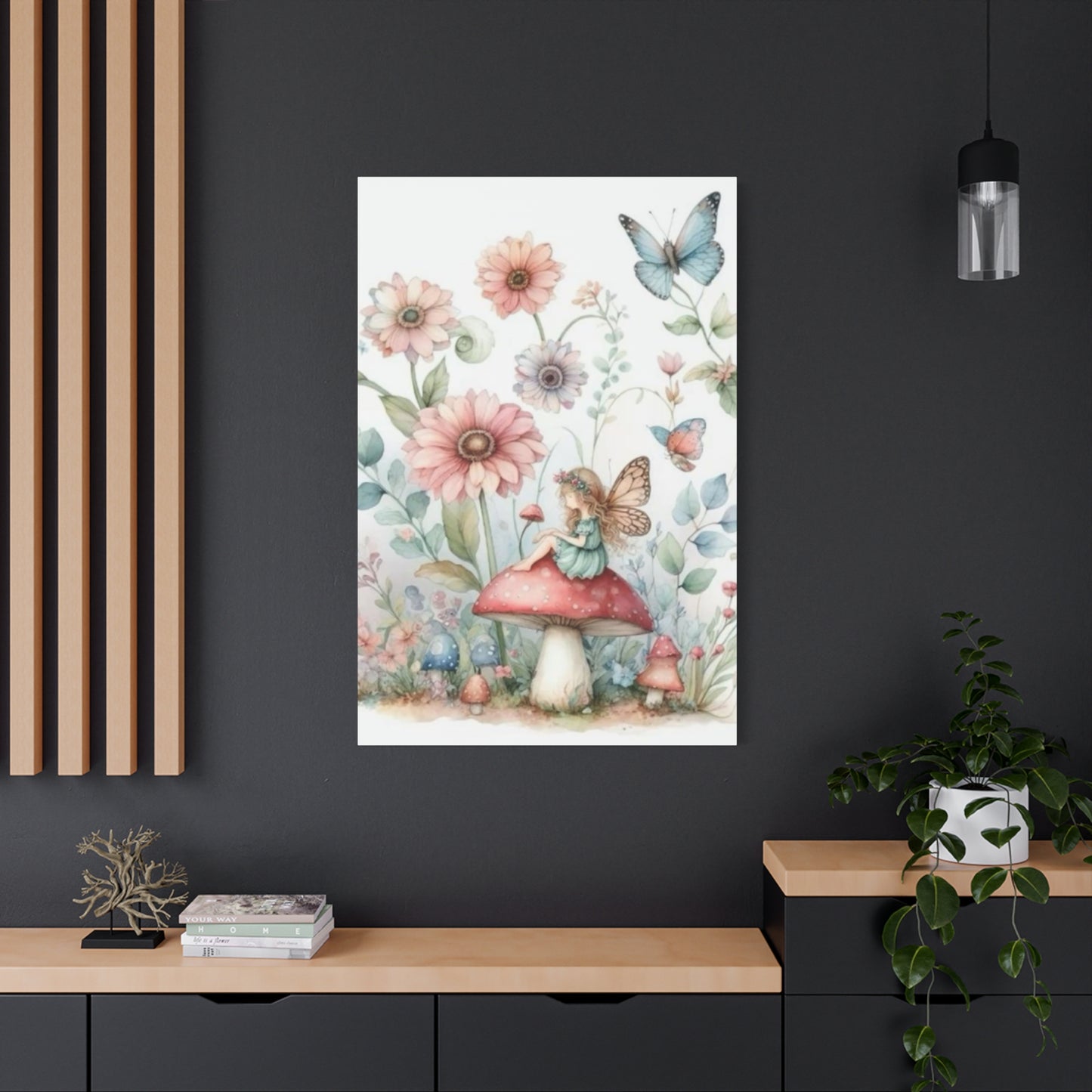Magical Fairy Wall Art: Enchanting Floral Fairy Prints for Every Home
Creating an enchanting atmosphere in your home has never been easier with the mesmerizing world of fairy-themed artwork. These delicate, whimsical pieces bring a touch of magic and wonder to any room, transforming ordinary walls into portals of imagination. Whether you're decorating a child's bedroom, adding charm to a nursery, or incorporating fantastical elements into your living areas, floral fairy prints offer endless possibilities for creating captivating visual narratives.
The appeal of fairy artwork transcends age boundaries, speaking to the child within us all while satisfying our desire for beauty and escapism. These ethereal beings, often depicted surrounded by blooming flowers, dancing butterflies, and shimmering light, create an atmosphere of serenity and joy that can instantly uplift any environment. From soft watercolor interpretations to bold contemporary designs, the versatility of fairy-themed prints ensures there's something perfect for every aesthetic preference and decorating style.
Modern fairy artwork has evolved far beyond traditional storybook illustrations, embracing diverse artistic styles that range from photorealistic digital art to abstract interpretations of these mythical creatures. Artists today create stunning pieces that capture the essence of magic while maintaining sophisticated appeal, making fairy prints suitable for adult environments as well as children's rooms. The incorporation of botanical elements, particularly flowers, adds natural beauty and organic flow to these already captivating compositions.
Bringing Enchantment Home with Magical Floral Fairies
The concept of incorporating fairy imagery into home décor represents more than simple decoration; it's about creating an environment that nurtures creativity, wonder, and positive energy. Floral fairies, in particular, combine the mystical allure of these magical beings with the timeless beauty of nature's blooms, resulting in artwork that feels both fantastical and grounded in natural splendor.
When selecting fairy prints for your home, consider how these pieces can serve as focal points that draw the eye and spark conversation. The intricate details often found in quality fairy artwork reward closer inspection, revealing hidden elements like tiny mushrooms, dewdrops on petals, or the delicate translucency of fairy wings. These discovered details create layers of visual interest that prevent the artwork from becoming merely decorative background elements.
The psychological impact of fairy imagery shouldn't be underestimated. These representations of pure imagination and possibility can serve as daily reminders to maintain a sense of wonder and openness to magic in everyday life. For children, fairy artwork can stimulate creativity and provide comforting presences in their personal environments. Adults often find that fairy imagery helps them reconnect with their imaginative side, providing a counterbalance to the practical demands of daily life.
Floral elements in fairy artwork serve multiple aesthetic and emotional functions. Flowers represent growth, renewal, and the cyclical nature of life, while their varied colors and forms provide endless opportunities for color coordination with existing décor. The combination of fairy figures with floral backgrounds creates compositions that feel alive and dynamic, suggesting movement and the changing seasons even within static artwork.
Quality fairy prints often incorporate sophisticated color palettes that extend far beyond the bright primary colors sometimes associated with children's fantasy art. Soft pastels, muted earth tones, and even dramatic darker palettes can all serve as backgrounds for fairy imagery, allowing these pieces to complement mature decorating schemes while maintaining their magical appeal. This versatility makes fairy artwork an excellent choice for homes where adult and child aesthetics need to coexist harmoniously.
Creating Whimsy with Enchanting Floral Fairy Prints
The art of selecting and displaying floral fairy prints involves understanding how these pieces can enhance rather than overwhelm your existing décor. The key lies in recognizing that fairy artwork functions best when it feels integrated into the overall design scheme rather than appearing as an afterthought or obvious children's decoration in an adult environment.
Consider the scale and proportion of fairy prints within your chosen display area. Large statement pieces can serve as dramatic focal points, particularly in bedrooms or reading nooks where a sense of escape and fantasy is most welcome. Smaller prints work beautifully in groupings, creating gallery walls that tell visual stories through their arrangement. The spacing between multiple pieces should allow each artwork to maintain its individual impact while contributing to the overall narrative of the display.
Color harmony plays a crucial role in successfully incorporating fairy prints into your décor. Look for pieces that either complement your existing color palette or serve as the inspiration for a room's color scheme. Many contemporary fairy artists work with sophisticated color combinations that can anchor an entire decorating plan. The floral elements in these pieces often provide excellent color cues for selecting coordinating accessories, textiles, and other decorative elements throughout the room.
The style and medium of fairy artwork should align with your overall aesthetic preferences. Watercolor fairy prints tend to feel soft and romantic, making them ideal for cottagecore or shabby chic decorating styles. Digital art and contemporary illustrations of fairies can work beautifully in modern or eclectic environments, while traditional oil painting reproductions might suit more classic or formal decorating approaches.
Lighting considerations become particularly important when displaying fairy artwork, as these pieces often benefit from highlighting that emphasizes their magical qualities. Natural light can bring out the luminous qualities often present in fairy imagery, while strategic artificial lighting can create dramatic effects during evening hours. Consider how different lighting conditions throughout the day will affect the appearance of your chosen fairy prints.
The emotional resonance of fairy artwork extends beyond visual appeal to encompass the feelings and associations these images evoke. Many people find that fairy imagery promotes feelings of peace, joy, and connection to nature. The presence of flowers in these compositions reinforces these positive associations while adding layers of symbolic meaning related to growth, beauty, and the cycles of natural life.
Transforming Your Environment with Fairy-Themed Artwork
The strategic placement of fairy-themed artwork can dramatically alter the atmosphere and perceived personality of any room. Unlike purely decorative elements, fairy prints carry narrative weight and emotional resonance that can shift the energy of an environment from mundane to magical. This transformative quality makes fairy artwork particularly valuable in homes where creating distinct moods in different areas is important.
Bedrooms benefit enormously from the peaceful, dreamlike qualities inherent in most fairy artwork. These pieces create a sense of sanctuary and escape that supports rest and relaxation. The floral elements common in fairy art reinforce this peaceful atmosphere while adding natural beauty that connects indoor environments with the outdoor world. Consider placing fairy prints where they'll be visible from the bed, creating a focal point that encourages calm and positive thoughts before sleep.
Living areas can accommodate fairy artwork when pieces are selected and displayed with attention to sophistication and artistic merit. Look for fairy prints that emphasize artistic technique and aesthetic beauty over purely whimsical elements. These pieces can serve as conversation starters while adding unique personality to common areas. The key is selecting artwork that feels intentional and curated rather than childish or overly cute.
Nurseries and children's rooms represent the most obvious applications for fairy artwork, but even in these contexts, thoughtful selection and display make significant differences in overall impact. Choose pieces that will grow with the child, avoiding overly juvenile interpretations that might quickly feel outdated. High-quality fairy artwork can remain appealing and appropriate as children mature, making it a wise long-term investment in room décor.
Transitional areas like hallways, staircases, and entryways offer excellent opportunities for fairy artwork that might feel overwhelming in smaller, more intimate rooms. These locations allow for bolder statements and larger pieces that can be appreciated in passing while contributing to the overall flow and personality of the home. Fairy prints in transitional areas can create connections between different rooms and establish consistent thematic elements throughout the house.
The seasonal adaptability of fairy artwork, particularly pieces featuring floral elements, makes these prints excellent choices for homes where décor is refreshed regularly. Spring and summer fairy imagery can be complemented with fresh flowers and lighter textiles, while autumn and winter fairy scenes might be paired with warmer colors and cozier accessories. This adaptability ensures that fairy artwork remains fresh and relevant throughout the year.
Selecting Premium Floral Fairy Canvas Artwork
The market for fairy-themed artwork has expanded dramatically in recent years, offering consumers an unprecedented range of styles, qualities, and price points. Understanding how to identify and select premium pieces ensures that your investment in fairy artwork will provide lasting satisfaction and maintain its visual impact over time.
Canvas quality represents one of the most important factors in determining the longevity and appearance of fairy prints. High-quality canvases provide better color reproduction, resist fading and warping, and maintain their structural integrity over decades. Look for prints on heavy-weight canvas with proper stretching and mounting that eliminates sagging or buckling. The texture of the canvas should complement the artistic style of the print, with smoother surfaces typically better suited to detailed digital artwork and textured canvases enhancing the appearance of traditional painting reproductions.
Print quality directly affects both the immediate visual impact and long-term durability of fairy artwork. Premium printing processes use archival inks that resist fading when exposed to normal indoor lighting conditions. Color accuracy becomes particularly important with fairy artwork, as the magical quality of these pieces often depends on subtle color gradations and luminous effects that can be lost with inferior printing methods. Ask about the printing process and ink quality when selecting fairy canvas prints, particularly for pieces that will be displayed in naturally lit areas.
Artist selection plays a crucial role in finding fairy artwork that transcends mere decoration to become meaningful artistic elements in your home. Established fairy artists often have recognizable styles and proven track records for creating compelling, well-composed pieces. Research artists whose work appeals to you, looking for consistent quality and artistic development over time. Many contemporary fairy artists maintain online portfolios that allow you to explore their full range of work and artistic evolution.
Size considerations extend beyond simple measurement to encompass the visual weight and presence of fairy artwork within your intended display area. Large fairy canvas prints can serve as commanding focal points but require sufficient wall area and appropriate surrounding décor to avoid overwhelming the room. Medium-sized pieces offer versatility and can work well individually or in groupings. Small fairy prints allow for creative arrangement opportunities and can be particularly effective when combined with other complementary artwork or decorative elements.
Edition limitations and authenticity become important considerations when investing in higher-end fairy artwork. Limited edition prints often maintain or increase their value over time while providing assurance of exclusivity. Numbered editions and artist signatures add authenticity and collectible appeal. However, unlimited prints of exceptional artistic quality can be excellent choices for personal enjoyment without the premium associated with limited availability.
Frame compatibility should be considered during the selection process, particularly for canvas prints that might benefit from protective framing or decorative borders. Some fairy artwork is designed to be displayed unframed, with edges that extend the imagery or complement the composition. Others benefit from traditional framing that provides visual boundaries and protective covering. Consider your display preferences and room décor when evaluating frame requirements for potential fairy print purchases.
Fairy Artwork Perfect for Children's Bedrooms
Children's bedrooms present unique opportunities and challenges when incorporating fairy artwork into the decorating scheme. These personal environments should reflect the child's interests and personality while maintaining functionality and supporting healthy sleep patterns. Fairy prints designed specifically for children's rooms often feature brighter colors, clearer storytelling elements, and imagery that directly appeals to young imaginations.
Age appropriateness becomes a crucial consideration when selecting fairy artwork for children's bedrooms. Younger children typically respond well to simpler compositions with clear, identifiable fairy figures and familiar floral elements like roses, daisies, or sunflowers. Older children might appreciate more complex artwork with intricate details and sophisticated artistic techniques that reward closer examination and provide ongoing visual interest as their aesthetic awareness develops.
Educational opportunities can be incorporated through fairy artwork that includes accurate botanical elements or mythological references. Prints featuring fairies interacting with identifiable flowers, plants, or natural settings can serve as starting points for discussions about nature, seasons, or environmental stewardship. Some fairy artwork incorporates subtle educational elements like accurate insect anatomy in wing designs or realistic plant structures in floral backgrounds.
Gender neutrality has become increasingly important in children's décor, and fairy artwork has evolved to move beyond traditional pink-and-purple princess aesthetics. Contemporary fairy art includes pieces suitable for any child regardless of gender identity, featuring diverse color palettes, various artistic styles, and fairy figures that represent different appearances and activities. Look for artwork that emphasizes adventure, nature connection, or creative expression over stereotypical gender associations.
Growth and adaptability should influence fairy artwork selection for children's bedrooms, as these environments need to evolve with changing tastes and developmental stages. Choose pieces with sufficient artistic merit and sophisticated design elements that won't feel childish as the occupant matures. High-quality fairy artwork can transition from childhood through teenage years when selected with attention to artistic quality over purely cute or whimsical elements.
Safety considerations specific to children's environments include secure hanging systems, non-toxic materials, and appropriate placement away from cribs or areas where climbing might be attempted. Canvas prints generally offer good safety characteristics compared to framed artwork with breakable glass components. Consider placement height and accessibility when planning fairy artwork displays in children's bedrooms.
Interactive possibilities can enhance the appeal and engagement value of fairy artwork in children's rooms. Some pieces serve as inspiration for creative play, storytelling, or artistic activities. Consider how fairy prints might inspire related activities like fairy garden creation, nature observation, or creative writing. The presence of engaging fairy artwork can encourage imaginative play and provide visual stimulation that supports creative development.
Whimsical Decorating for Boho and Cottagecore Aesthetics
The intersection of fairy artwork with popular decorating styles like boho and cottagecore creates opportunities for cohesive, atmospheric room designs that feel both current and timelessly magical. These aesthetic movements embrace many of the same values and visual elements that make fairy artwork appealing: connection to nature, appreciation for handcrafted beauty, and celebration of simple pleasures.
Boho decorating styles naturally accommodate fairy artwork through their emphasis on eclectic collecting, global influences, and spiritual or mystical elements. Fairy prints can serve as focal points in boho rooms when selected with attention to color harmony and artistic authenticity. Look for fairy artwork that incorporates earthy colors, natural textures, and artistic techniques that complement other boho elements like tapestries, macramé, or vintage textiles. The layered, collected-over-time appearance characteristic of boho decorating allows fairy artwork to feel integrated rather than imposed.
Color palettes in boho environments often feature rich, saturated hues alongside natural earth tones, creating opportunities for fairy artwork that might seem overwhelming in more minimalist decorating approaches. Deep purples, forest greens, warm oranges, and golden yellows can all work beautifully in fairy prints designed for boho settings. The floral elements common in fairy artwork naturally complement the plant-heavy aesthetic typical of boho decorating while adding fantastical elements that enhance the mystical atmosphere.
Cottagecore aesthetics embrace fairy artwork even more naturally, as both movements celebrate rural life, natural beauty, and connection to traditional crafts and simpler ways of living. Fairy prints featuring garden scenes, wildflowers, or pastoral settings align perfectly with cottagecore values while adding magical elements that elevate the aesthetic beyond mere rustic nostalgia. The emphasis on handcrafted beauty in cottagecore decorating makes original fairy artwork or high-quality reproductions particularly appropriate choices.
Seasonal adaptability becomes especially important in boho and cottagecore decorating approaches, as both styles often incorporate seasonal changes through accessories, textiles, and decorative elements. Fairy artwork featuring different seasonal flowers or natural settings can anchor seasonal decorating changes while maintaining consistent thematic elements throughout the year. Spring fairy prints might feature cherry blossoms or daffodils, while autumn pieces could showcase changing leaves or harvest themes.
Layering techniques common in both boho and cottagecore decorating allow fairy artwork to be combined with other artistic and decorative elements in visually rich compositions. Consider how fairy prints might work alongside vintage botanical prints, landscape photography, or other nature-themed artwork. The goal is creating cohesive groupings that tell visual stories while maintaining individual impact for each piece.
Texture mixing characteristic of boho and cottagecore styles can be enhanced through careful selection of fairy artwork mediums and display methods. Canvas prints provide different textural qualities compared to paper prints or original paintings. Consider how the surface texture of fairy artwork will interact with other textural elements in the room like woven baskets, ceramic vessels, or natural wood furniture.
Nurturing Imagination Through Floral Fairy Imagery
The role of fairy artwork in stimulating and nurturing imagination extends far beyond simple decoration to encompass psychological and developmental benefits that make these pieces valuable additions to any home environment. The combination of fantastical elements with natural beauty creates visual narratives that encourage creative thinking and provide escape from the mundane aspects of daily life.
Storytelling potential inherent in fairy artwork makes these pieces excellent conversation starters and imagination catalysts. Children naturally create stories around fairy images, developing narrative skills and creative expression through their interpretations of what they see. Adults can also benefit from this storytelling aspect, finding that fairy artwork provides mental breaks from logical, linear thinking and encourages more intuitive, creative mental processes.
Emotional regulation benefits associated with fantasy imagery and natural elements combine in fairy artwork to create pieces that can genuinely influence mood and mental state. The peaceful, magical qualities common in fairy prints can help reduce stress and anxiety while promoting feelings of wonder and possibility. The presence of floral elements reinforces these positive effects through their associations with growth, renewal, and natural beauty.
Creative inspiration flows naturally from exposure to high-quality fairy artwork, as these pieces demonstrate imaginative possibilities and artistic techniques that can influence other creative pursuits. Many people find that surrounding themselves with inspirational imagery enhances their own creative output and problem-solving abilities. Fairy artwork can serve this function while also providing aesthetic pleasure and environmental beauty.
Meditation and mindfulness practices can be enhanced by the presence of fairy artwork that provides focal points for contemplation and reflection. The detailed, intricate nature of quality fairy prints rewards careful observation and can serve as anchors for mindful attention. The peaceful, natural themes common in fairy artwork align well with meditation practices and stress reduction techniques.
Connection to nature, often limited in modern urban environments, can be fostered through fairy artwork that celebrates natural beauty and environmental themes. The floral elements in fairy prints bring botanical beauty indoors while the fairy figures themselves often represent harmony between human consciousness and natural systems. This connection can be particularly valuable for city dwellers or others with limited access to natural environments.
Cultural and mythological connections present in fairy imagery link contemporary artwork to ancient storytelling traditions and collective human experiences with magic and mystery. Understanding these connections can deepen appreciation for fairy artwork while providing educational opportunities for children and adults alike. Many fairy artists incorporate authentic mythological elements or cultural references that reward research and exploration.
Achieving Soft Aesthetics with Pastel Fairy Art
The use of pastel color palettes in fairy artwork creates particularly gentle, soothing effects that work beautifully in environments where calm and tranquility are desired. Pastel fairy prints offer all the imaginative appeal of more vibrant fairy artwork while providing color schemes that integrate easily with soft, romantic, or minimalist decorating approaches.
Color psychology principles explain why pastel fairy artwork feels especially peaceful and nurturing. Soft pinks promote feelings of love and compassion, gentle blues encourage calm and reflection, lavender purples suggest creativity and spiritual awareness, and pale yellows evoke happiness and optimism. When combined in fairy artwork, these colors create complex emotional responses that support positive mental states and environmental harmony.
Decorating flexibility offered by pastel color palettes makes these fairy prints excellent choices for rooms that serve multiple functions or need to accommodate changing uses over time. Pastel fairy artwork won't compete with other decorative elements or overwhelm small areas, allowing for decorating evolution without requiring artwork replacement. This adaptability makes pastel fairy prints wise investments for growing families or frequently redecorated environments.
Seasonal appropriateness varies with pastel fairy artwork, as different pastel combinations work better in different seasons. Spring pastels like soft greens, baby blues, and pale pinks feel fresh and renewal-focused, while autumn pastels in muted oranges, warm grays, and cream tones complement cooler weather decorating. Consider how your chosen pastel fairy prints will feel throughout the year and whether seasonal accessories can enhance their appeal.
Age appropriateness of pastel fairy artwork extends across a wider range than more saturated alternatives, making these pieces suitable for nurseries through adult bedrooms. The gentle nature of pastel colors feels appropriate for babies and young children while maintaining sufficient sophistication for teenage and adult environments. This longevity makes pastel fairy prints excellent investments for rooms that need to grow with their occupants.
Combination possibilities with other artwork become easier with pastel fairy prints, as these gentle colors provide excellent supporting roles in gallery walls or grouped displays. Consider how pastel fairy artwork might anchor collections that include photography, botanical prints, or abstract artwork. The soft colors won't compete for attention while still providing magical elements and visual interest.
Lighting considerations become particularly important with pastel fairy artwork, as these subtle colors can appear washed out in inadequate lighting or overly stark in harsh artificial light. Natural light typically enhances pastel fairy prints beautifully, bringing out subtle color variations and luminous qualities. Consider your room's lighting conditions when selecting and placing pastel fairy artwork to ensure optimal appearance throughout the day.
Styling Guidelines for Fairy-Themed Art Displays
The successful incorporation of fairy artwork into home décor requires careful attention to display techniques, placement strategies, and styling approaches that enhance rather than diminish the magical qualities of these pieces. Professional styling principles can be adapted to fairy artwork to create displays that feel intentional, sophisticated, and visually compelling.
Height and positioning guidelines for fairy artwork follow general principles while accommodating the specific characteristics of these pieces. Eye-level placement remains ideal for most fairy prints, but consider how the viewing angle affects the perception of flying or floating fairy figures. Some fairy artwork benefits from slightly elevated positioning that enhances the sense of ethereal movement, while ground-level nature scenes might work better at slightly lower heights.
Grouping strategies for multiple fairy prints can create powerful visual narratives that tell stories or establish thematic connections. Consider arranging fairy artwork chronologically to suggest progression or seasonally to represent natural cycles. Size variation within groupings adds visual interest while maintaining cohesive themes. Leave adequate space between pieces to allow individual appreciation while maintaining group cohesion.
Background considerations become especially important with fairy artwork, as busy or competing backgrounds can diminish the magical qualities of these pieces. Neutral wall colors typically provide the best backgrounds for fairy prints, allowing the artwork to serve as the primary visual focus. Consider how wall texture, color, and existing architectural elements will interact with your chosen fairy artwork.
Lighting strategies specific to fairy artwork should emphasize the luminous, magical qualities often present in these pieces. Track lighting, picture lights, or strategically placed accent lighting can enhance the ethereal effects common in quality fairy prints. Avoid harsh or glaring light that might flatten the dimensional qualities of the artwork or create unwanted reflections on canvas or glass surfaces.
Accessory coordination with fairy artwork requires careful balance to avoid overwhelming the magical qualities of the pieces while creating cohesive room designs. Natural elements like plants, flowers, crystals, or wooden accessories often complement fairy artwork without competing for attention. Avoid overly literal interpretations or cutesy accessories that might diminish the artistic integrity of quality fairy prints.
Seasonal styling opportunities allow fairy artwork to serve as anchors for changing decorative schemes throughout the year. Spring styling might incorporate fresh flowers that echo the botanical elements in fairy prints, while autumn arrangements could feature natural elements like pinecones, branches, or seasonal foliage. These seasonal additions should enhance rather than overwhelm the fairy artwork itself.
Inspiring Dreamlike Artwork for Fantasy Enthusiasts
Fantasy art enthusiasts represent a sophisticated market for fairy artwork that extends far beyond simple whimsical decoration to encompass serious artistic appreciation and collection. This audience seeks fairy prints that demonstrate technical skill, imaginative vision, and artistic integrity while maintaining the magical qualities that define the genre.
Artistic technique evaluation becomes crucial when selecting fairy artwork for fantasy art collections. Look for pieces that demonstrate mastery of composition, color theory, and rendering skills regardless of whether they're created through traditional or digital methods. The best fairy artwork transcends medium limitations to achieve effects that serve the artistic vision rather than being constrained by technical limitations.
Mythological accuracy and creative interpretation represent important considerations for serious fantasy art collectors. Some fairy artwork draws directly from traditional folklore and mythology, providing educational value alongside aesthetic appeal. Other pieces take creative liberties with fairy mythology to explore new artistic possibilities. Both approaches can be valuable, but understanding the artistic intent helps in making appropriate selections for specific collections or environments.
Artist reputation and career development influence both the current appeal and future value of fairy artwork. Established fantasy artists with consistent bodies of work often command higher prices but provide greater assurance of artistic quality and potential value retention. Emerging artists might offer excellent artwork at more accessible prices while providing opportunities to support developing talent.
Series and thematic connections allow fantasy art enthusiasts to build coherent collections that explore different aspects of fairy mythology or artistic interpretation. Many fairy artists create related pieces that work together to tell stories or explore themes, providing opportunities for extended collecting and display projects. Consider how individual pieces might fit into broader collection goals.
Limited editions and original artwork represent the premium tier of fairy art collecting, offering exclusivity and potential investment value alongside aesthetic appeal. These pieces often feature enhanced production values, artist signatures, and certificates of authenticity that add to their collectible appeal. However, high-quality unlimited prints can provide excellent artistic value for personal enjoyment without the premium associated with limited availability.
Convention and gallery connections provide opportunities for fantasy art enthusiasts to discover new fairy artists, view original artwork, and purchase pieces directly from creators. Many fairy artists participate in fantasy conventions, Renaissance faires, or genre-specific art shows where their work can be viewed in person and purchased with direct artist interaction.
Creating Magical Ambiance with Fairy and Flower Art
The combination of fairy imagery with floral elements creates artwork that serves multiple decorative and psychological functions within home environments. These pieces provide visual beauty, emotional resonance, and atmospheric enhancement that can significantly influence the perceived character and energy of any room.
Atmospheric lighting techniques can enhance the magical qualities inherent in fairy and flower artwork, creating environmental effects that extend the artwork's impact beyond its physical boundaries. Warm, diffused lighting tends to emphasize the gentle, nurturing aspects of fairy artwork, while cooler lighting might enhance more mystical or ethereal qualities. Consider how different lighting throughout the day will affect the mood and appearance of fairy artwork.
Complementary decorating elements should enhance rather than compete with fairy artwork while contributing to a cohesive magical atmosphere. Natural materials like wood, stone, or organic textiles often work well with fairy themes, as do accessories that suggest connection to nature or handcrafted origins. Avoid over-theming that might make sophisticated fairy artwork appear childish or overly literal.
Seasonal adaptation strategies allow fairy and flower artwork to anchor changing decorative schemes that reflect natural cycles and seasonal moods. Spring displays might emphasize growth and renewal themes, summer arrangements could celebrate abundance and vitality, autumn décor might explore transformation and harvest themes, while winter styling could focus on rest and contemplation.
Scent and sensory enhancement can extend the appeal of fairy artwork beyond pure visual appreciation. Consider how natural scents from flowers, herbs, or essential oils might complement fairy-themed rooms without overwhelming other senses. The goal is creating multi-sensory environments that support the magical atmosphere suggested by the artwork.
Color harmony principles become particularly important when fairy artwork serves as the foundation for room color schemes. The floral elements in fairy prints often provide excellent color cues for selecting paint colors, textile choices, and decorative accessories throughout the room. Consider how different color temperatures and saturations will interact with the fairy artwork to create desired atmospheric effects.
Privacy and intimacy considerations influence how fairy artwork functions within different room types and usage patterns. Bedrooms and personal retreat areas benefit from fairy artwork that promotes peace and introspection, while public areas might accommodate more dynamic or conversational pieces. Understanding the intended emotional function of each area helps in selecting appropriate fairy artwork styles and themes.
Designing Charming Displays for Cozy Environments
The creation of cozy environments enhanced by fairy artwork requires careful attention to scale, comfort, and atmospheric details that support feelings of safety, warmth, and contentment. Fairy prints can serve as focal points in cozy settings while contributing to the overall sense of intimate, nurturing atmosphere.
Scale relationships between fairy artwork and cozy furniture arrangements should create visual balance without overwhelming intimate settings. Smaller, more detailed pieces often work better in cozy environments where viewing distances are shorter and attention to fine details is possible. Consider how fairy artwork will appear from typical seating positions and ensure that sizing supports comfortable viewing.
Texture layering opportunities in cozy environments allow fairy artwork to be integrated with soft furnishings, natural materials, and comfort-focused accessories. Canvas prints provide different textural qualities compared to framed pieces, and these differences can be used strategically to enhance the tactile appeal of cozy settings. Consider how artwork texture will interact with fabrics, woods, and other materials in the immediate area.
Intimate lighting design for cozy environments should emphasize the gentle, nurturing aspects of fairy artwork while providing adequate illumination for comfortable activities. Table lamps, floor lamps, and accent lighting typically work better than overhead fixtures for creating cozy atmospheres. Consider how fairy artwork will appear under different lighting conditions and times of day.
Comfort optimization through fairy artwork involves selecting pieces that promote relaxation, positive emotions, and stress reduction. The peaceful, natural themes common in quality fairy prints naturally support comfortable environments while providing visual interest that rewards contemplation. Avoid fairy artwork with jarring colors, chaotic compositions, or unsettling themes in cozy settings.
Personal connection development with fairy artwork becomes particularly important in cozy, intimate environments where pieces will be viewed regularly and at close range. Choose fairy prints that resonate personally rather than following trends or others' recommendations. The emotional connection between viewer and artwork contributes significantly to the success of cozy decorating schemes.
Storage and flexibility considerations allow cozy environments enhanced by fairy artwork to adapt to changing needs and preferences over time. Consider how fairy prints might be rotated seasonally or rearranged for different occasions while maintaining the fundamental cozy character of the environment. Flexibility ensures that cozy settings remain fresh and personally meaningful.
Perfect Fairy Artwork for Nursery Environments
Nursery design presents unique opportunities and challenges when incorporating fairy artwork, as these environments must serve both aesthetic and functional needs while supporting infant development and parental comfort. Fairy prints designed for nurseries should combine magical appeal with appropriate color schemes, soothing imagery, and developmental benefits.
Safety standards for nursery artwork include secure mounting systems, non-toxic materials, and appropriate placement away from cribs or areas where infants might reach hanging objects. Canvas prints generally offer good safety characteristics compared to framed artwork with glass components. Consider mounting height and security when planning fairy artwork displays in nursery environments.
Developmental appropriateness of nursery fairy artwork involves selecting pieces with appropriate visual complexity, color contrast, and imagery that supports infant cognitive development. High contrast elements can aid visual development in newborns, while more complex details provide ongoing interest as infants mature. The gentle, peaceful themes common in fairy artwork naturally support the calm atmosphere beneficial for infant development.
Parent comfort considerations ensure that nursery fairy artwork serves adult needs alongside infant benefits. Parents spend significant time in nursery environments, and artwork should provide visual pleasure and emotional support during feeding, changing, and soothing activities. Choose fairy prints that feel nurturing and positive to adult viewers while maintaining appropriate themes for infant environments.
Growth adaptation allows nursery fairy artwork to remain appropriate and appealing as children develop and mature. High-quality fairy prints with sophisticated artistic elements can transition from nursery through childhood when selected with attention to artistic merit over purely infantile themes. This longevity makes quality fairy artwork wise investments for growing families.
Gender neutrality has become increasingly important in nursery design, and fairy artwork has evolved to move beyond traditional gender-specific color schemes and imagery. Contemporary fairy art includes pieces suitable for any child regardless of gender identity, featuring diverse color palettes and fairy representations that avoid stereotypical associations.
Educational opportunities can be incorporated through nursery fairy artwork that includes accurate natural elements or introduces concepts like seasons, flowers, or natural cycles. As children develop language skills, fairy artwork can serve as conversation starters and vocabulary development tools. Look for pieces with identifiable elements that can support learning activities as children mature.
Exploring Light versus Dark Fairy Art Aesthetics
The contrast between light and dark approaches to fairy artwork creates dramatically different aesthetic effects and emotional responses, allowing collectors and decorators to choose pieces that align with their personal preferences and intended environmental atmosphere. Understanding these different approaches helps in making informed selections that serve specific decorative and psychological goals.
Light fairy art aesthetics typically emphasize brightness, hope, and joy through use of vibrant colors, luminous effects, and uplifting imagery. These pieces often feature fairies in sunlit gardens, surrounded by blooming flowers and characterized by soft, glowing light effects. The emotional impact tends toward comfort, optimism, and gentle magic that feels safe and nurturing. Light fairy artwork works particularly well in children's environments, healing areas, or anywhere that cheerful, uplifting energy is desired.
Color palettes in light fairy artwork often feature pastels, bright natural tones, and metallic accents that suggest sunlight or moonbeams. These colors create associations with dawn, spring, and renewal while promoting feelings of peace and contentment. The floral elements in light fairy artwork typically showcase blooming flowers in peak condition, representing growth, abundance, and natural beauty at its most appealing.
Dark fairy art aesthetics explore more mysterious, complex, or dramatic themes while maintaining the essential magical qualities that define fairy imagery. These pieces might feature fairies in twilight settings, surrounded by autumn foliage or mysterious forest environments. The emotional impact tends toward contemplation, mystery, and sophisticated magic that appeals to mature sensibilities. Dark fairy artwork works well in adult environments, reading areas, or anywhere that atmospheric depth and visual sophistication are desired.
Color palettes in dark fairy artwork often feature deep purples, forest greens, midnight blues, and rich earth tones that create atmosphere and mood. These colors suggest evening, autumn, or deep forest settings while promoting feelings of mystery and contemplation. The floral elements might include night-blooming flowers, seed pods, or autumn leaves that represent different aspects of natural cycles.
Emotional resonance differs significantly between light and dark fairy art approaches, with each serving different psychological and decorative functions. Light fairy artwork tends to energize and uplift, making it excellent for morning areas or environments where positive energy is needed. Dark fairy artwork often promotes introspection and contemplation, making it suitable for evening areas or personal retreat environments.
Decorating integration strategies vary for light and dark fairy artwork, as each approach works better with certain color schemes, lighting conditions, and overall aesthetic directions. Light fairy artwork integrates well with bright, airy decorating schemes and natural lighting, while dark fairy artwork often works better with dramatic lighting and sophisticated color palettes. Consider how your chosen approach will interact with existing décor and lighting conditions.
Seasonal appropriateness can influence the choice between light and dark fairy artwork, as different approaches align with different times of year. Light fairy artwork often feels most appropriate during spring and summer months, while dark fairy artwork might complement autumn and winter decorating. However, personal preference and individual room characteristics should take precedence over seasonal considerations.
Creating Fantasy Realms with Fairy Art Collections
The development of comprehensive fairy art collections allows enthusiasts to create immersive fantasy environments that transport viewers into magical realms through carefully curated artwork displays. Building effective fairy art collections requires understanding artistic styles, thematic connections, and display strategies that create cohesive visual narratives.
Collection themes provide organizational frameworks that guide acquisition decisions and display strategies. Some collectors focus on specific artistic styles, such as Victorian fairy painting reproductions or contemporary digital fairy art. Others organize around mythological themes, seasonal cycles, or particular fairy artists. Having clear thematic direction helps ensure collection coherence while preventing random accumulation of unrelated pieces.
Artist diversity within fairy art collections can prevent monotony while showcasing different approaches to fairy imagery and mythology. Including work from multiple artists provides opportunities to compare techniques, styles, and interpretations while creating more dynamic and interesting displays. Consider balancing established artists with emerging talents to create collections that reflect both artistic tradition and contemporary development.
Scale and proportion planning ensures that fairy art collections display effectively within available environments. Large statement pieces can anchor collections while smaller works provide supporting details and intimate viewing opportunities. Consider how different sized pieces will work together in your intended display areas and plan acquisitions accordingly to avoid scale conflicts or overwhelming smaller artworks.
Conclusion
Magical Fairy Wall Art captures the imagination and brings a sense of wonder, beauty, and whimsy into any living space. These enchanting floral fairy prints are more than decorative pieces—they are portals to magical realms where nature and fantasy intertwine. With delicate wings, flowing gowns, and floral elements that mirror the seasons, fairy art offers a timeless charm that appeals to both the young and the young at heart.
Incorporating fairy wall art into your home adds an ethereal touch, softening the space and inviting moments of imagination and serenity. Whether adorning a nursery, a child’s room, a reading nook, or even a calm bedroom retreat, these prints foster a sense of comfort, creativity, and peaceful escapism. They encourage a slower pace—an appreciation for gentle beauty, quiet moments, and the magic hidden in everyday life.
From vintage-style botanical illustrations to dreamy watercolor interpretations, floral fairy prints come in a variety of styles that complement different interior themes. Whether your space leans toward boho, cottagecore, eclectic, or classic, fairy art fits seamlessly while adding a storybook quality that’s truly unique. Their soft color palettes—often featuring pastels, earthy tones, and subtle metallics—make them easy to blend into both neutral and colorful surroundings.
Symbolically, fairies represent transformation, protection, and nature’s spirit—qualities that resonate deeply in the home. They embody a connection to the natural world, reminding us to nurture imagination, cherish beauty, and keep a little magic close. These artworks aren’t just about fairies; they’re about mood, meaning, and creating a sense of peaceful enchantment within your space.
In conclusion, Magical Fairy Wall Art is an invitation to dream, to decorate with intention, and to turn ordinary walls into visual stories filled with grace and wonder. Whether you’re curating a themed gallery wall or simply adding a single statement piece, fairy prints bring lightness, fantasy, and timeless elegance into the home.

















